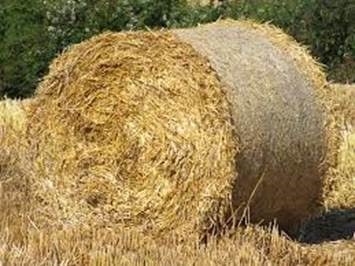Valuing Straw
|
Valuing Straw Small grain straw is an important resource for livestock producers. It’s the preferred bedding for wintering and although low in digestibility and feed value, it can be used as a roughage source in rations containing high quality feedstuffs. While straw is abundant in the state, not all livestock operations with limited farming have much in their operations. Often they negotiate the opportunity to bale some straw on neighboring farming operations. In some instances of a very high residue crop, removing straw may benefit a farmer in reducing subsequent field operations or facilitating better planting of next year’s crop. Leaving the straw has value in erosion protection and soil properties. Baling straw will remove some nutrients that will recycle for future plant growth. A ton of wheat straw will contain about 12 lbs of nitrogen, 3 lbs of phosphorous, 20 lbs of potassium, and 3 lbs of sulfur. Based on replacement fertilizer prices this probably equates to $15 to $25 per ton and is often a basis for compensation by a rancher to a farmer for baling straw. The carbon or organic matter left in the field also has value in building soil but is less definable. Some study data shows little change in long term soil organic matter by occasional straw removal such as one in five years. As a feedstuff straw is not very desirable as it is low in protein, energy, minerals, and palatability; but is use full in times of forage shortages or as a filler or extender when feeding high quality feeds as corn silage or distillers grains. Generally straw is limited to about 30% of a ration to insure adequate nutrition and prevent compaction issues. Under current grain and hay prices in the region, the value of straw as a feedstuff is likely less than $40/ton.
|
|


